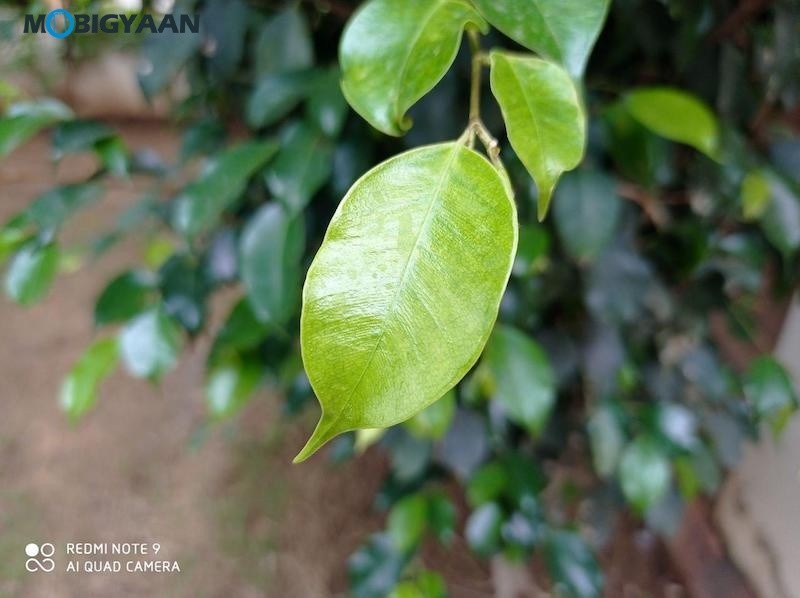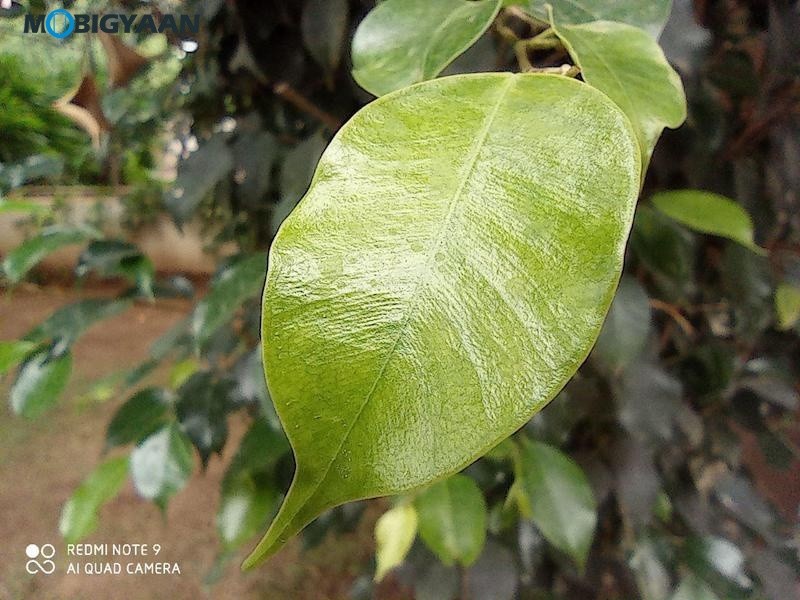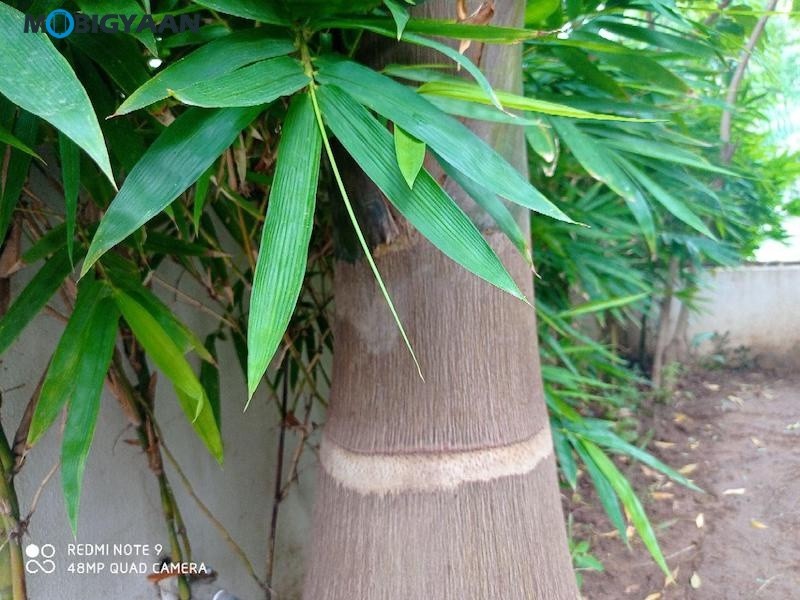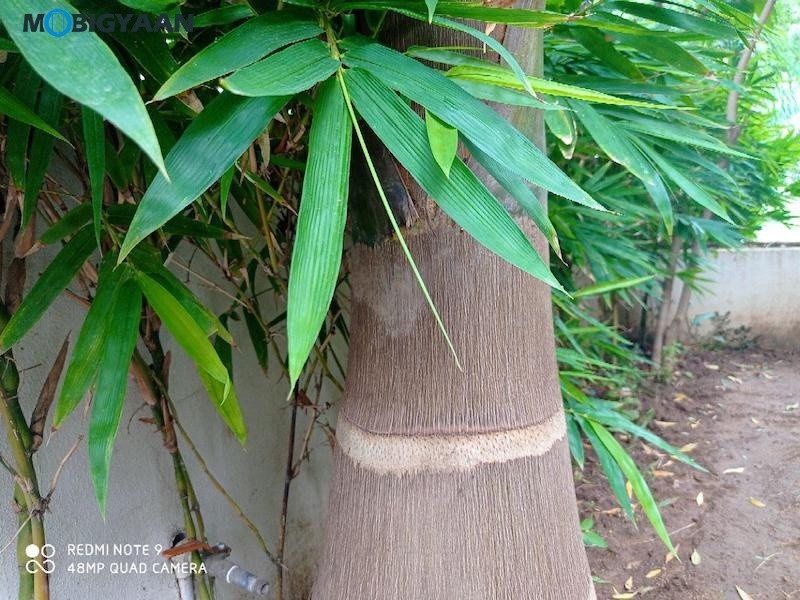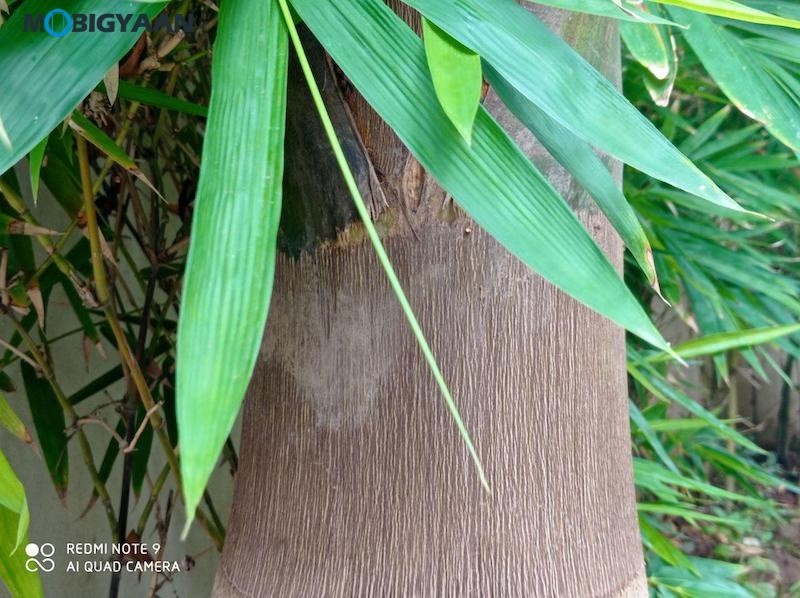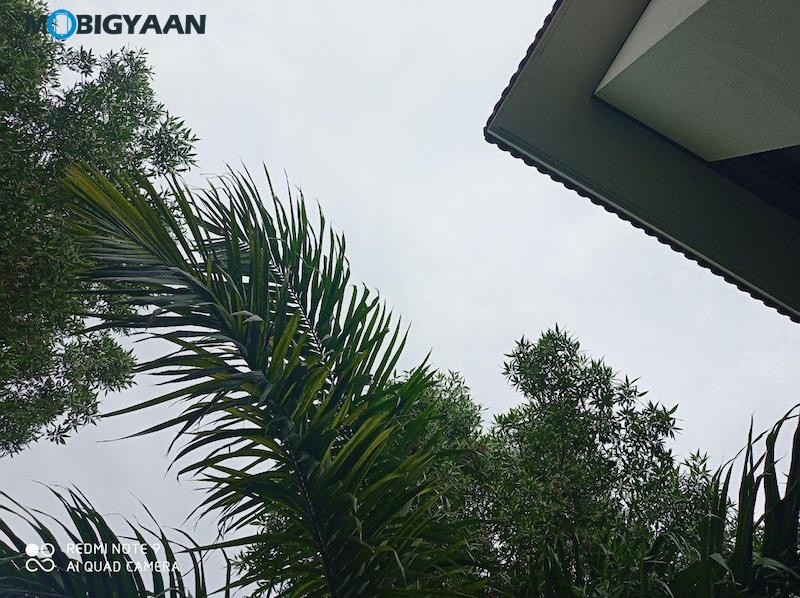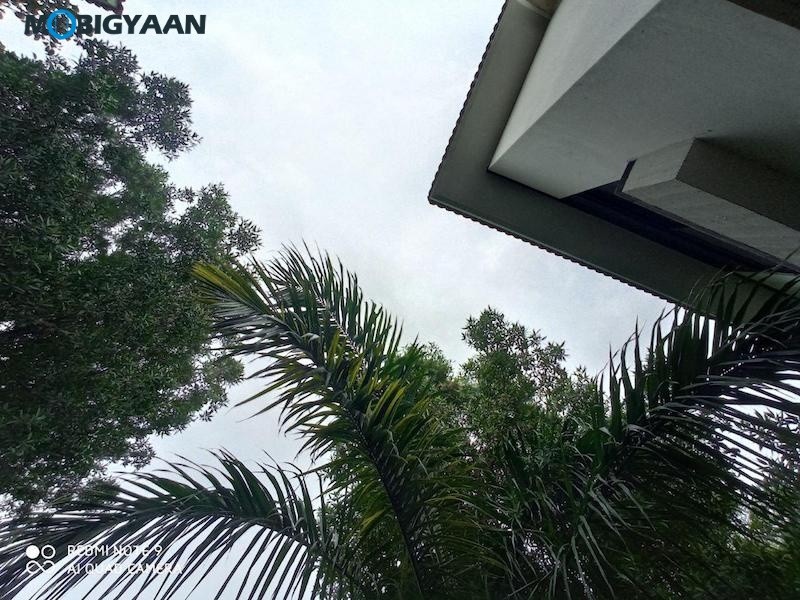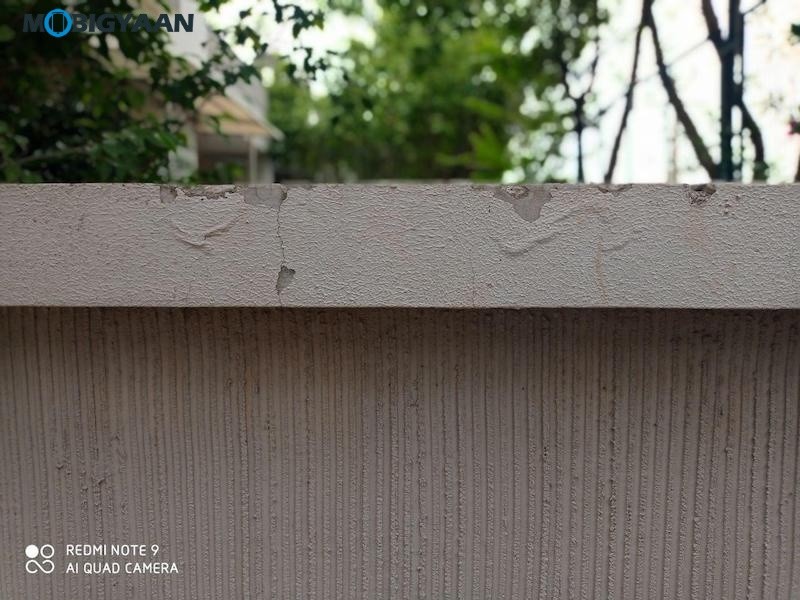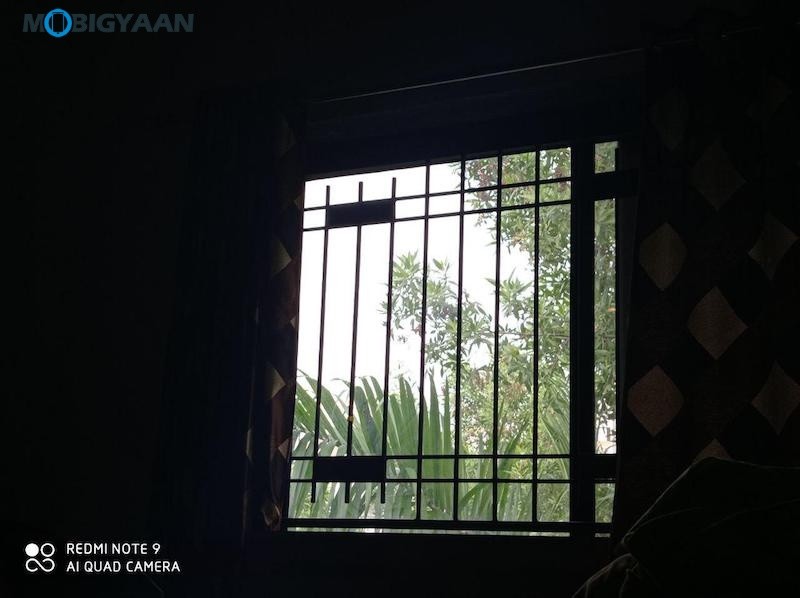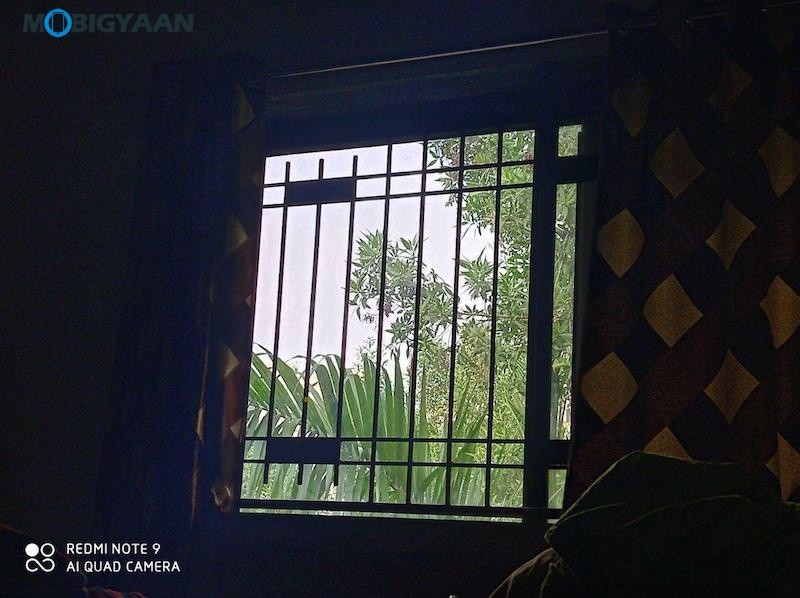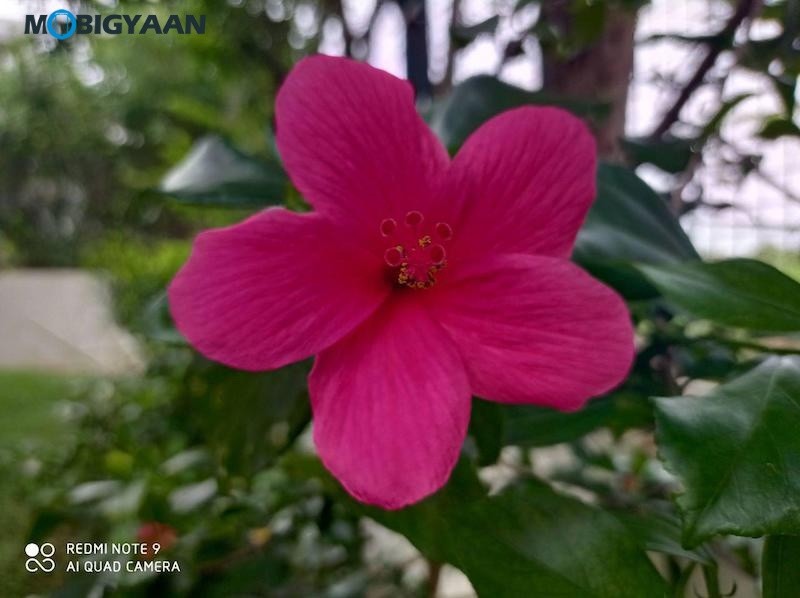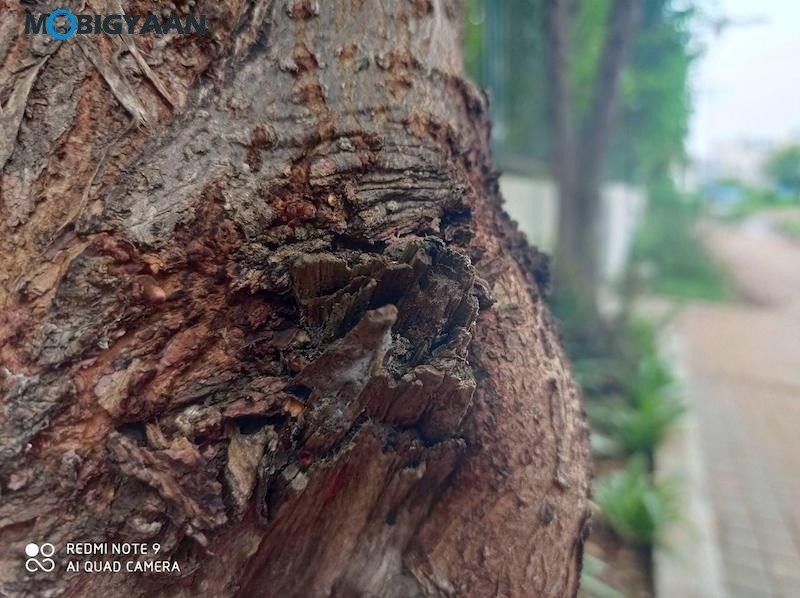Xiaomi’s recently launched Redmi Note 9 is a toned-down variant of the Redmi Note 9 Pro Max and competes with the budget midrange smartphones, price starts at Rs 11,999 for its base variant. About the quick spec overview of the Redmi Note 9, it packs 48 MP quad cameras, 12nm MediaTek Helio G85 CPU, and a large 5,020 mAh battery. The Redmi Note 9 Series is the company’s 9th generation smartphones and the Redmi Note 9 is the successor to the last year’s Rs 9,999 Redmi Note 8. But is it worth the price? Does it stand against the rivals? Here’s our Redmi Note 9 review.
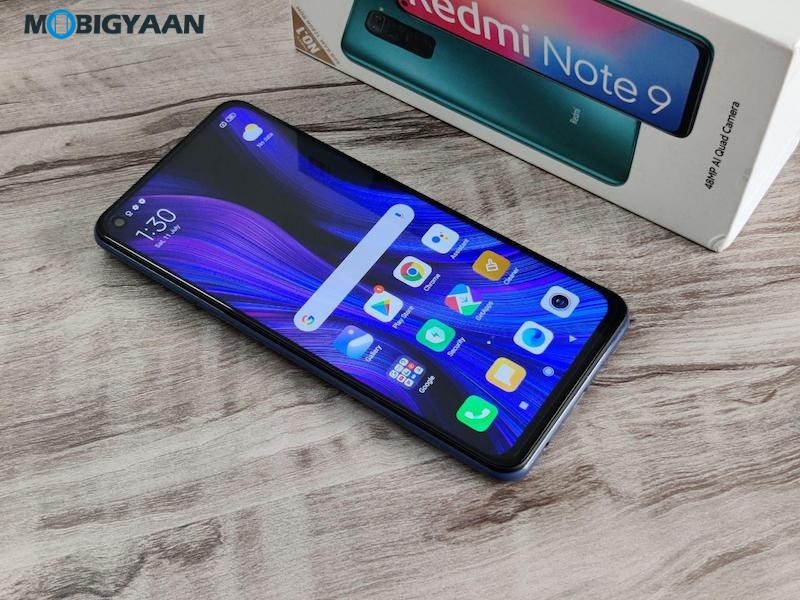
Xiaomi Redmi Note 9 Specifications
- Display: 6.53-inch Full HD+ display with 2340 × 1080 pixels resolution, 450nit brightness, and Corning Gorilla Glass 5 protection
- Software: MIUI 11 based on Android 10
- Protection: Corning Gorilla Glass 5 (front), Splash resistant (P2i coating)
- CPU: 12nm MediaTek Helio G85 octa-core SoC
- Memory: 4 GB OR 6 GB LPPDDR4X RAM
- Storage: 64 GB OR 128 GB UFS 2.1, expandable up to 512 GB with microSD card
- Rear Camera: Quad Cameras, 48 MP rear cameras with Samsung GM1 sensor, f/1.79 aperture + 8 MP 118° ultra-wide-angle lens with f/2.2 aperture + 2 MP macro lens + 2 MP depth sensor
- Selfie Camera: 13 MP, f/2.25 aperture
- Others: Fingerprint sensor, IR sensor
- Connectivity Options: Dual SIM, 4G VoLTE, Wi-Fi 802.11 ac (2.4 GHz + 5 GHz), Bluetooth 5, GPS + GLONASS, and USB Type-C port
- Colors: Aqua Green, Arctic White, and Pebble Grey
- Battery: 5,020 mAh, 22.5W fast charging
- Price: ₹11,999 (4 GB + 64 GB), ₹13,499 (4 GB + 128 GB), ₹14,999 (6 GB + 128 GB)
- Availability: 24th July via online and offline stores
Design, Display, & Build
The Redmi Note 9 offers Corning Gorilla Glass 5 on the front and a glossy finish polycarbonate design on the back, smartphones in this range usually offer a polycarbonate design, and less likely to use glass material on the back.
Just like the predecessor, the physical fingerprint scanner is on the backside, not side-mounted on the power button like the Redmi Note 9 Pro Max. There’s hardly any difference on the design front when compared to the Redmi Note 9 Pro Max, the quad-camera design resembles it.
On the front side, you will find a 6.53-inch Full HD+ IPS DotDisplay display with a screen cutout for housing the selfie camera. The Redmi Note 9 Series is the first to get the punch-hole design and it’s the current smartphone trend.
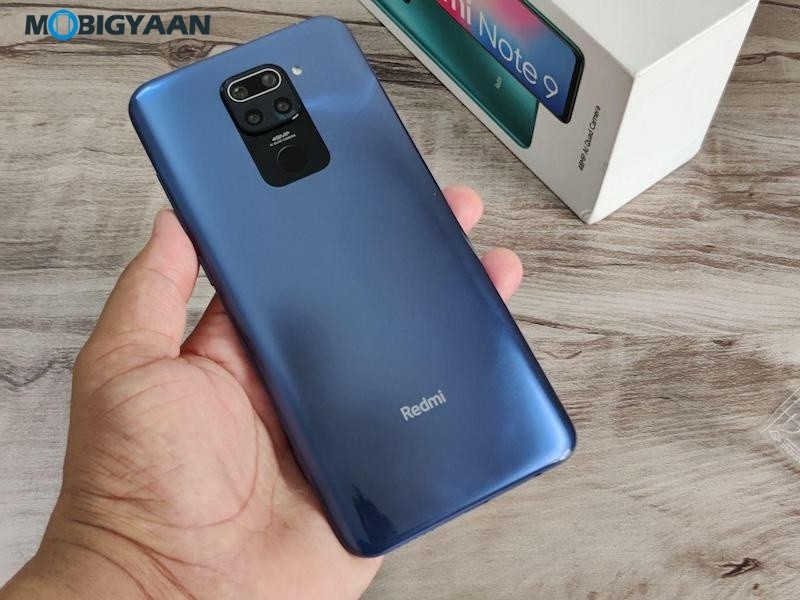
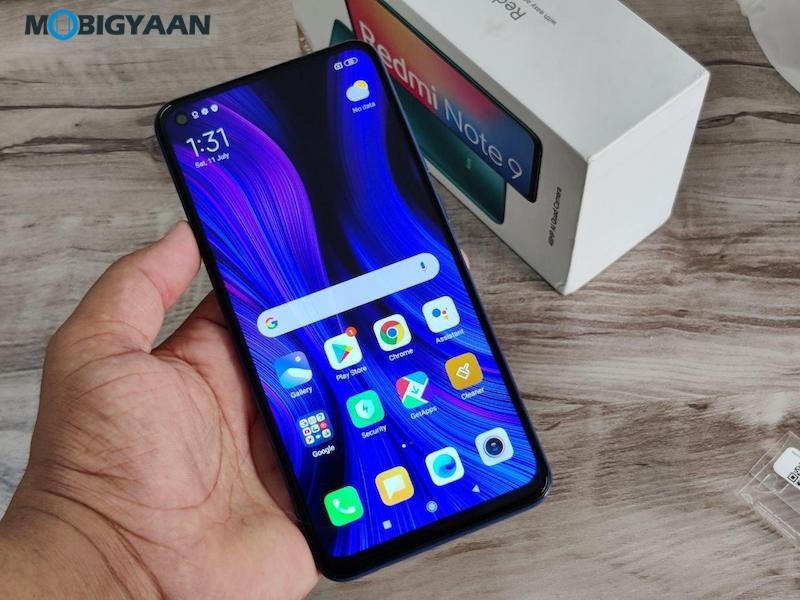
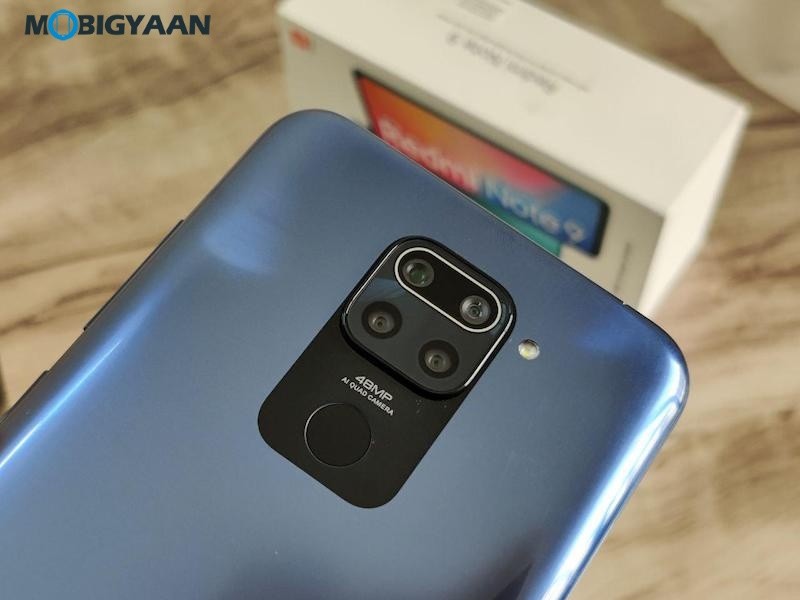
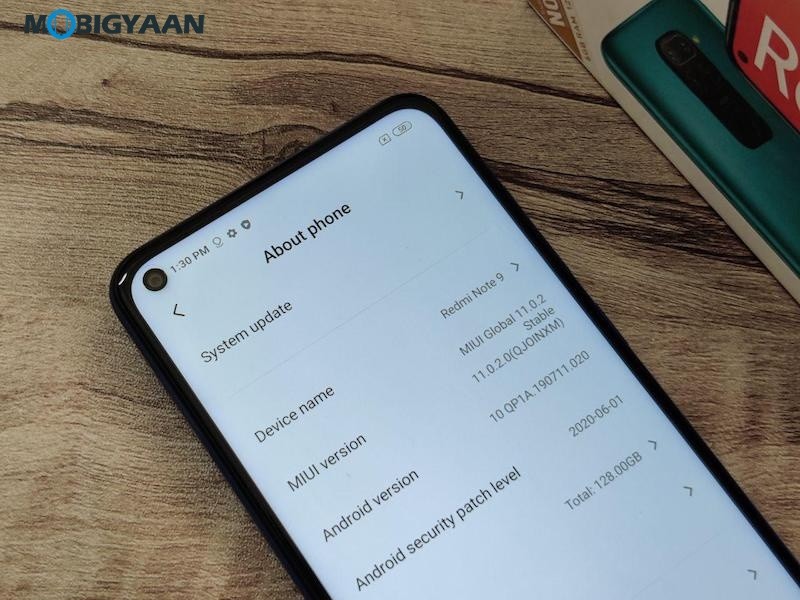
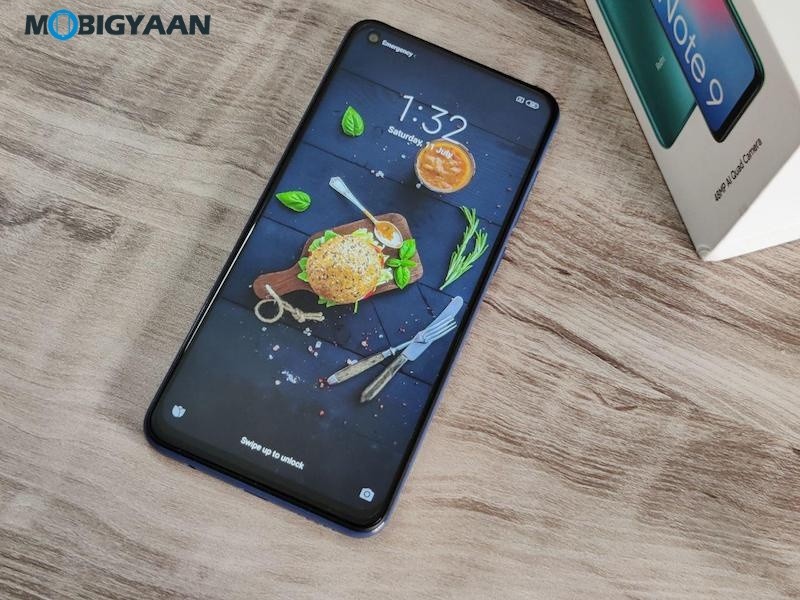
On the bottom side, the phone has a USB Type-C port, loudspeakers, 3.5 mm jack, and a microphone. You will find an IR sensor and another microphone for noise cancellation. On the right side, you see a power button and volume controls while the left side has a triple-slot SIM tray.
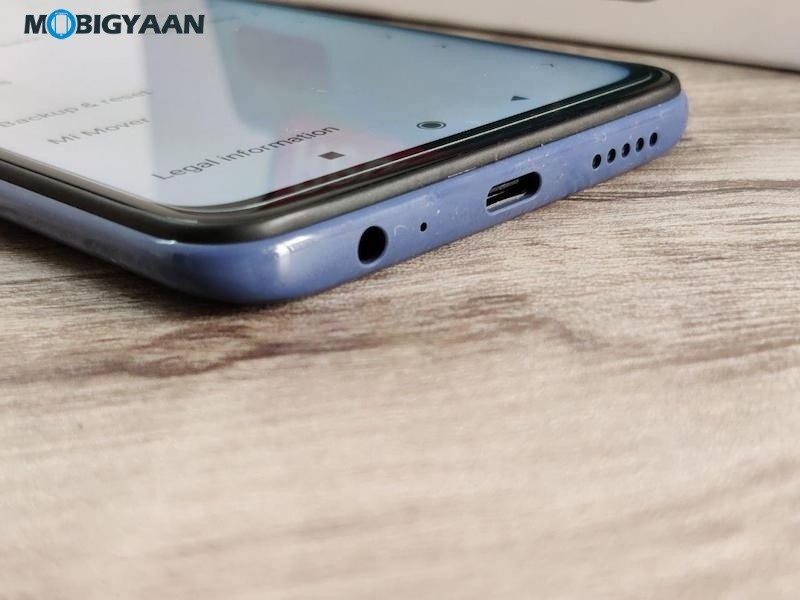
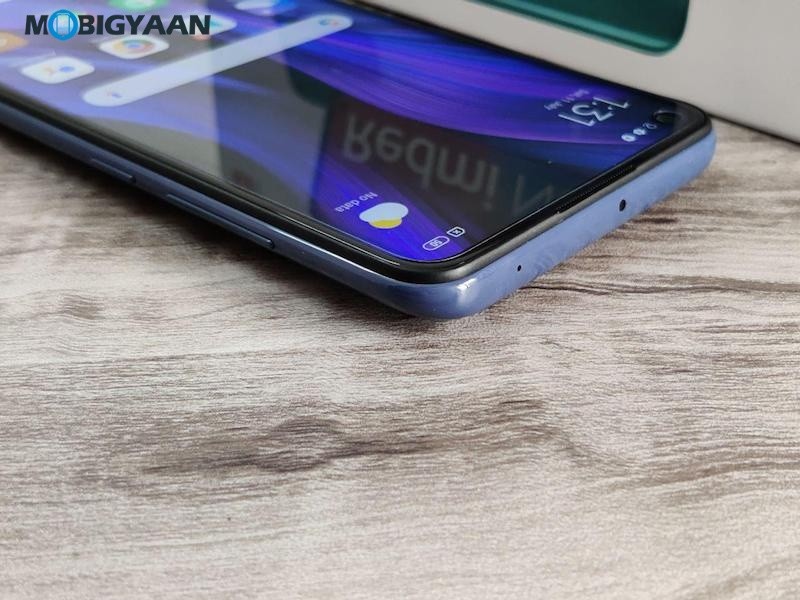
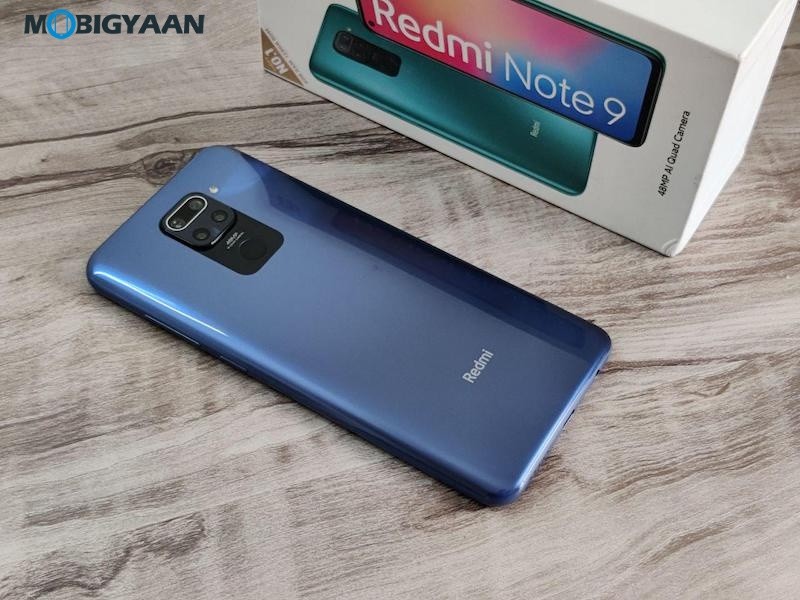
Software & User Interface
The Redmi Note 9 runs on the latest MIUI 11 built over the Android 10. If you are familiar with the Xiaomi’s MIUI, you can see plenty of features and customizations in the new MIUI 11, from dark mode to UI customizations, icon packs, themes, new sounds, and the redesigned interface. Speaking of the performance of the UI, the interface runs smoothly in the initial use.
The fingerprint scanner works as it should, we didn’t get any problems with it, it works very similarly to its processor, the Redmi Note 8. Unless you want an in-display fingerprint scanner with a phone using AMOLED screen for a higher price, there’s no complaint with the scanner.
To know more about the MIUI 11, read out previous Redmi phone reviews running MIUI software.
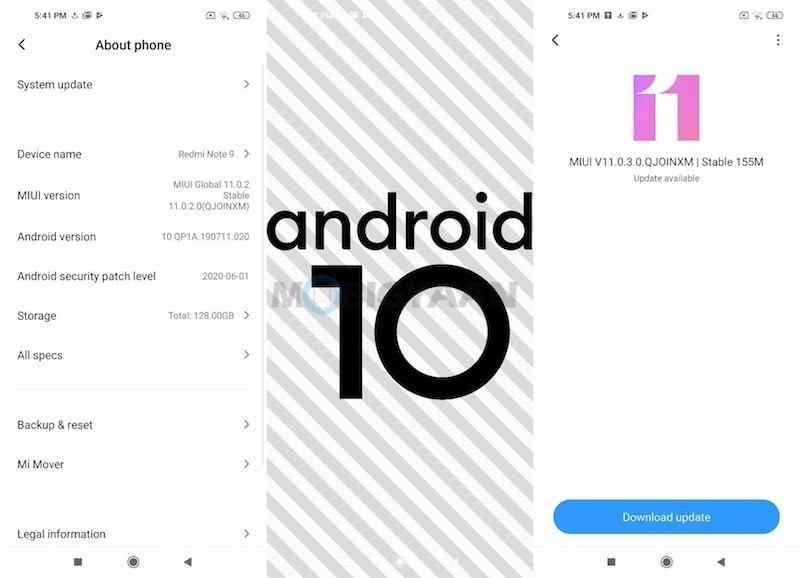
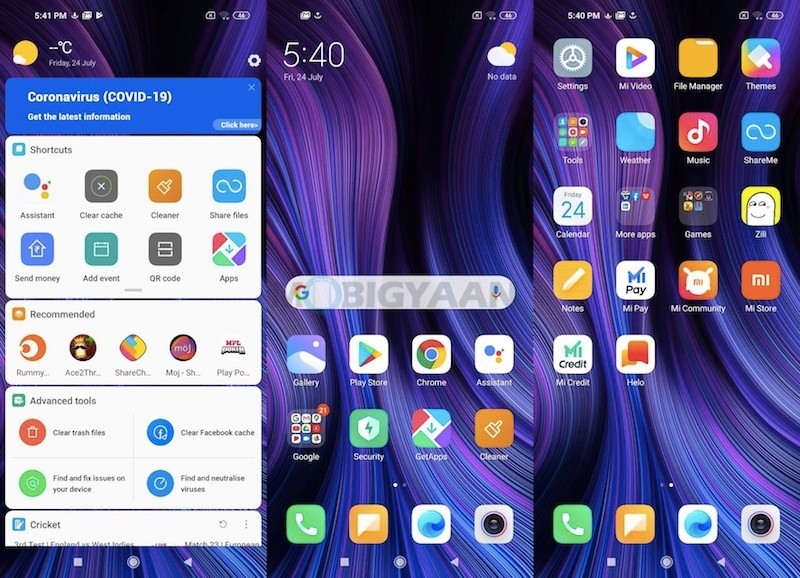
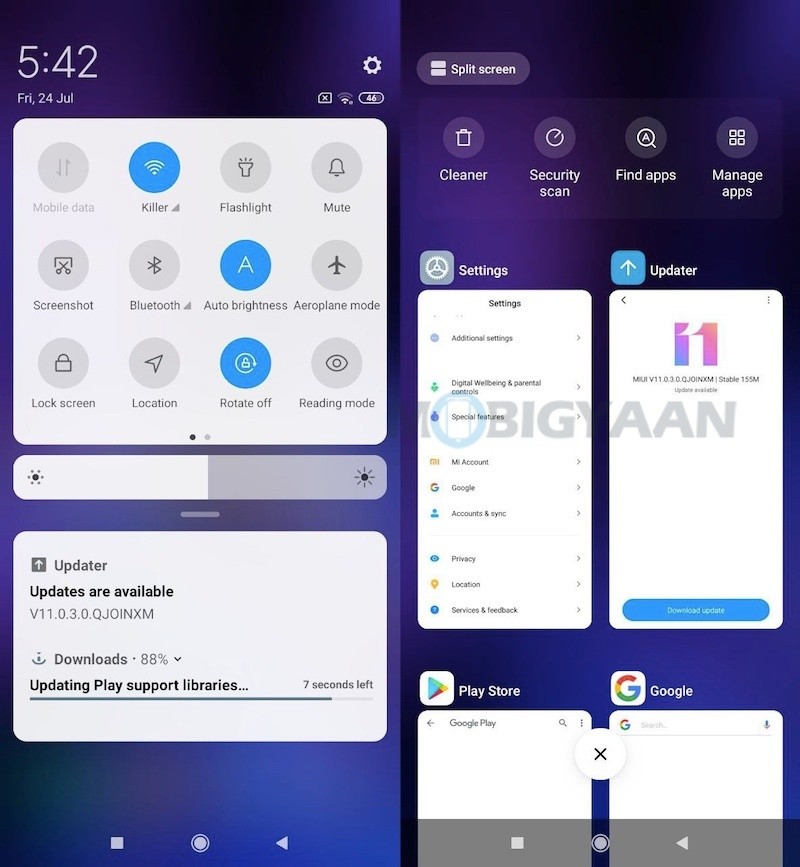
Hardware, Performance, & Gaming
Under the hood, the phone is powered a 12 nm MediaTek Helio G85 octa-core chip unlike its upper variant, the Redmi Note 9 Pro Max which uses a Qualcomm Snapdragon 720G SoC. Moreover, the phone comes with up to 6 GB LPDDR4X RAM and 128 GB UFS 2.1 storage that expands via microSD card.
The Redmi Note 9 comes in three variants, one with 6 GB RAM and 128 GB being the top variant priced at Rs 14,999, the second with 4 GB RAM and 128 GB storage is priced at Rs 13,499, and the last being the base variant with 4 GB RAM and 64 GB storage is priced at Rs 11,999.
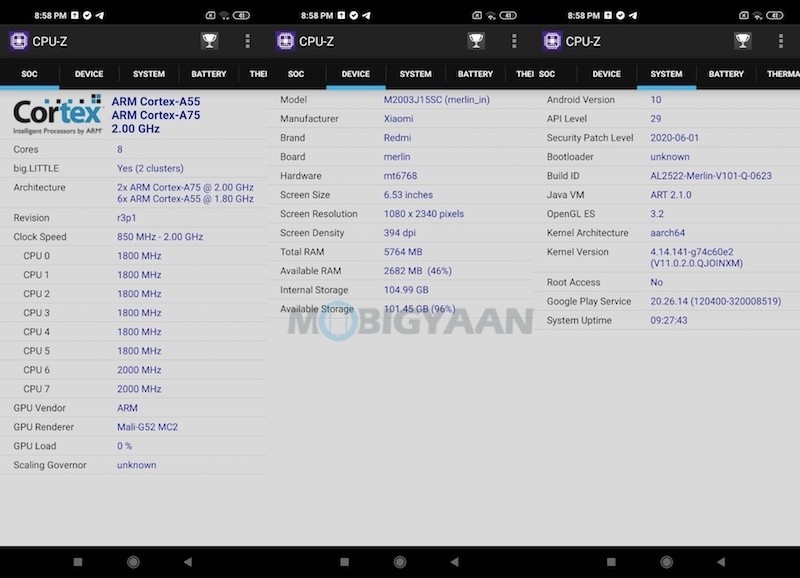
You may find smartphones with Snapdragon 712 or higher in this price range if you pick the 6 GB version. But at this price, it sets up a competition with its own predecessor sibling, the Redmi Note 8 Pro, you can say it’s a close competitor challenging the MediaTek Helio G90T.
In addition to that, rivals such as the realme Narzo 10 offer a little less in terms of on paper CPU, it’s the Helio G80 (realme Narzo 10) vs Helio G85 (Redmi Note 9), yet you see hardly any realtime performance difference. The Redmi Note 9 also competes with Samsung’s M series smartphone – the Galaxy M21.
For most users, the Redmi Note 9 could be a good casual gamer rig if you are not a hardcore gamer. The gaming performance on the Redmi Note 9 is sufficient for this price unless you demand more performance out of its GPU.
PUBG Mobile and other games would run medium to high graphics settings, identical performance as compared to the Helio G80 as well as the Helio G90T. You can pick a better GPU (Adreno 618 found on the Snapdragon 720G or Snapdragon 730G) for setting the graphics to higher.
Cameras
The Redmi Note 9 offers quad cameras, the 48 MP f/1.79 being the main rear camera using the Samsung GM1 sensor, while the rest three are 8 MP f/2.2 ultra-wide-angle 118-degree lens, 2 MP macro lens, and 2 MP depth sensor. The front side has a standard 13 MP f/2.25 camera.
The interface comes with a 48 MP mode, Portrait mode, Slow motion, Short video, Wide-angle video, Night, Panorama, Pro, as well as Pro color, AI mode, HDR, Macro, Time Lapse, Google Lens, Docs, Tilt-Shift, Movie frame, Macro video which seems a rare feature.
The camera specs on paper look good and are enough to compete with the rivals, however, when it comes to the camera features, the Redmi Note 9 lacks behind in terms of 4K, 1080p 60fps video recording, and overall camera quality in this segment.
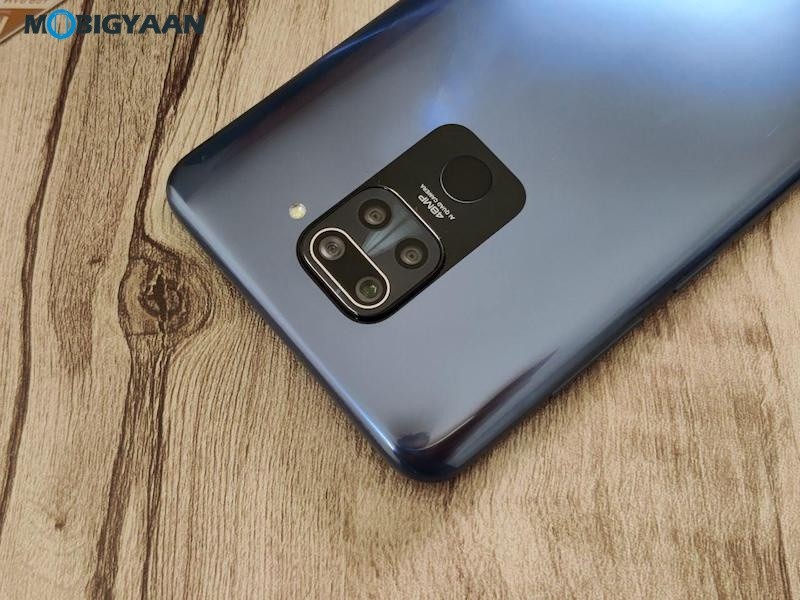

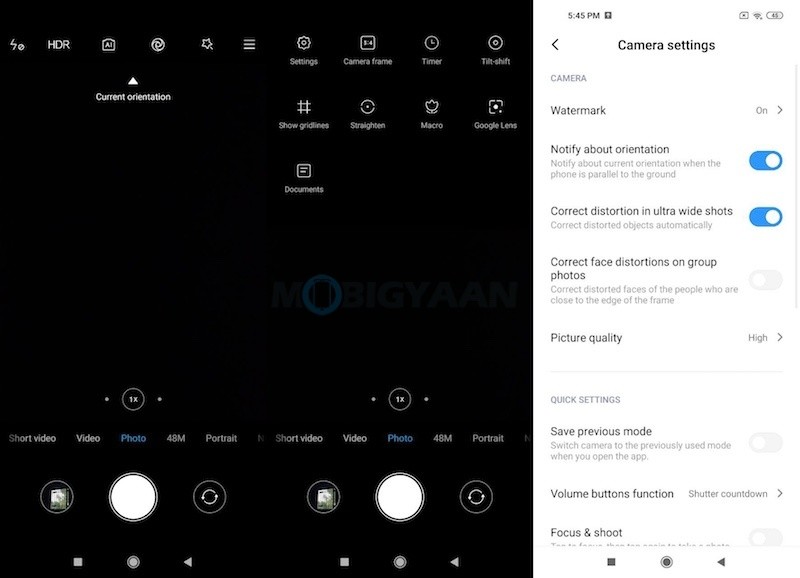
The 48 MP sounds good for the price, even though the predecessor also used one with the same megapixels. The midrange segment is filled with 48 MP camera smartphones, if you go a little higher in this segment, you may find the 64 MP cameras, like the Samsung Galaxy M31, realme X2, and so on.
The camera configuration is pretty much the same as you compare it with the Redmi Note 8, you may expect the camera quality identical. A few software tweaks are added to the phone to improve the image quality, however, there’s no significant difference, a budget midranger will perform to its capacity. Check out the camera samples taken from the Redmi Note 9.
Xiaomi Redmi Note 9 Camera Samples
Battery Life
What’s also good is its battery life, the phone has enough power to survive a day and a half, packs a 5,020 mAh battery with 22.5W fast charging support. The battery life sounds impressive at this price, it’s upgraded as compared to its predecessor Redmi Note 8. More power means it has a better battery backup, you should be getting more than just a decent battery life.
Speaking of the fast charging technology, its upper sibling Redmi Note 9 Pro Max offers quicker 33W fast charging while the Redmi Note 9 offers 22.5W. At this point, the charging on the Redmi Note 9 is capped at 18W due to a software lock, an update will soon be rolled out which will enable 22.5W charging capabilities on Redmi Note 9.
Verdict
With the Redmi Note 9 series, things have been a little different, the Redmi Note 8 used a Qualcomm Snapdragon chip whereas the Redmi Note 9 uses a MediaTek Helio chip. What has changed is the design, the performance, and the battery life, the rest seems to be the same from its predecessor.
It’s worth noting that the design now uses a P2i nano-coating means the phone is spash resistant and can resist water splashes (it’s not water submersible though). The performance upgrade is not very significant, but a little, the MediaTek Helio G85 is closely related to the Helio G90T found on the last year’s Redmi Note 8 Pro. The battery life is yet impressive at this price, 5,020 mAh with 22.5W fast charging support.
If we compare its 6 GB RAM and 128 GB storage variant which is priced at Rs 14,999, it is clearly defeated by the newly launched Korean rival, the Samsung Galaxy M21 with AMOLED display, 6,000 mAh battery, and better overall cameras. Plus, the Redmi Note 8 was launched at Rs 9,999 while Redmi Note 9 is launched at Rs 11,999, the price difference is about 16% higher comparatively. Unless you are on a tight budget, you may look for other options such as the Samsung Galaxy M21 before you make the final decision.

